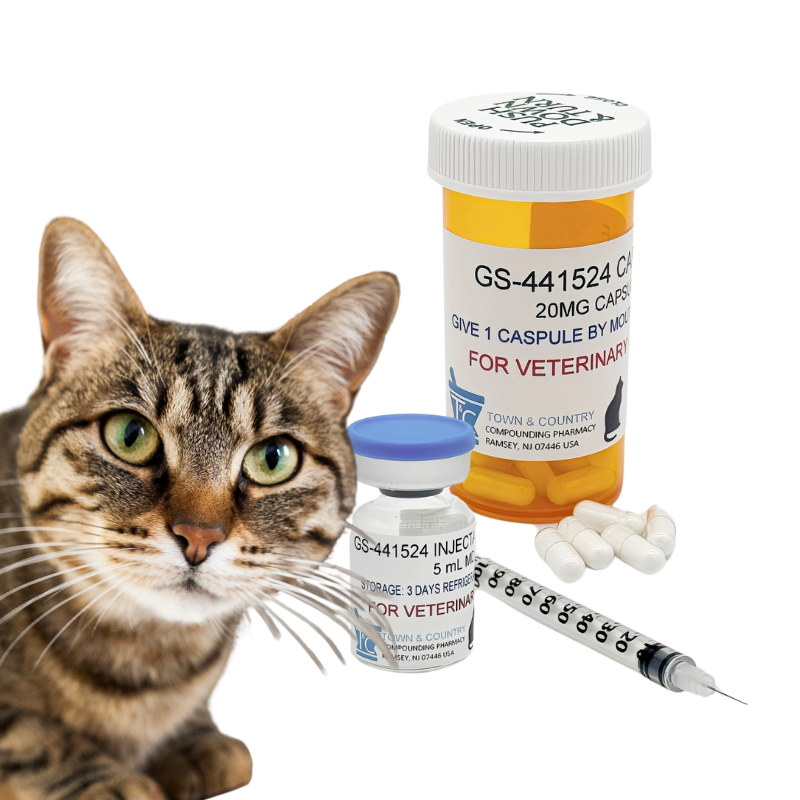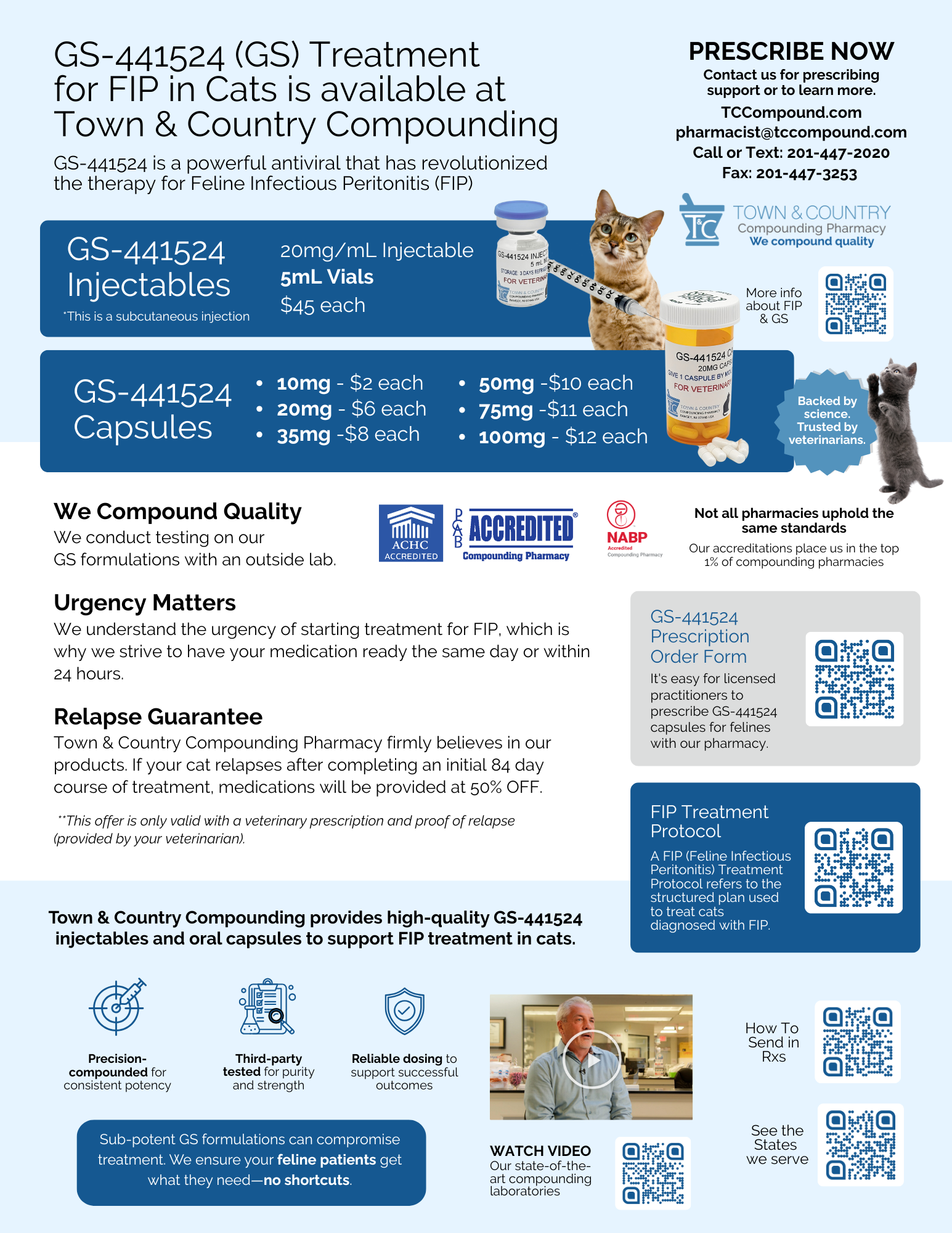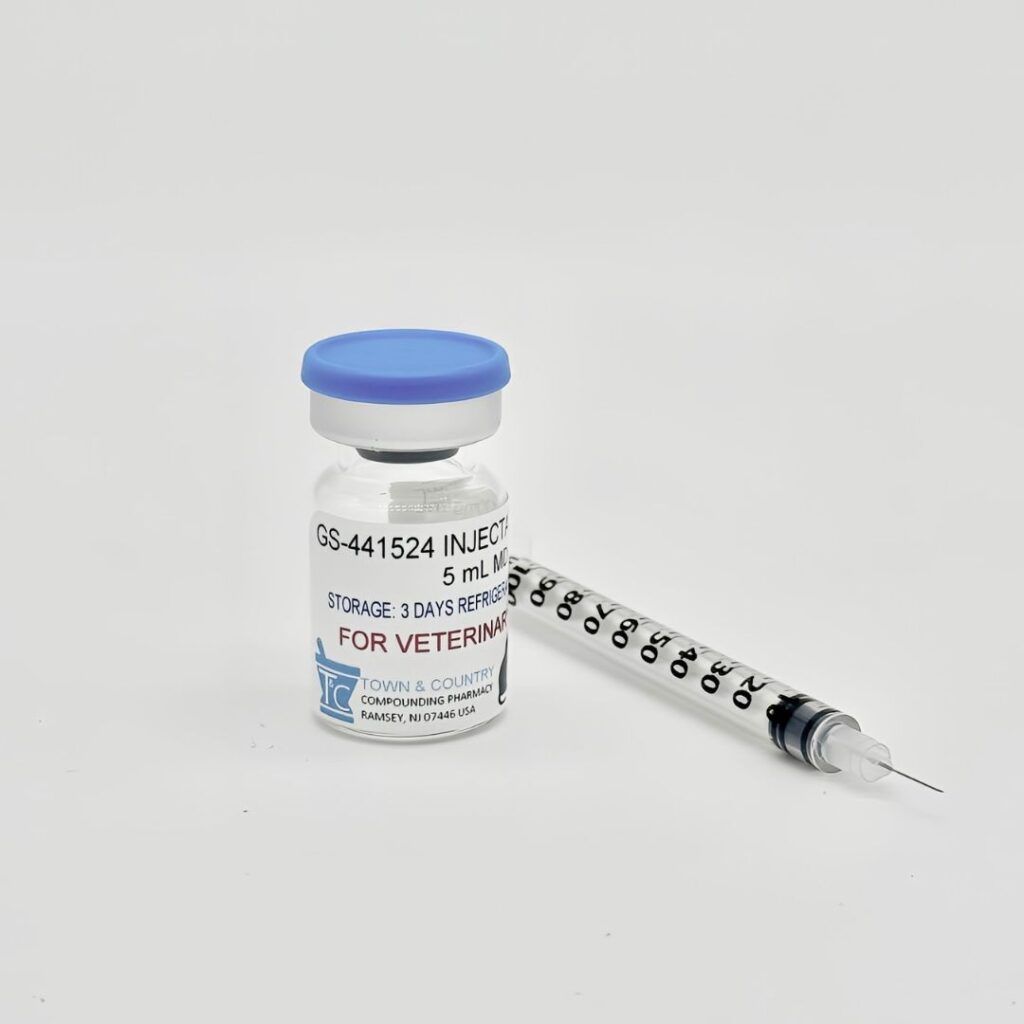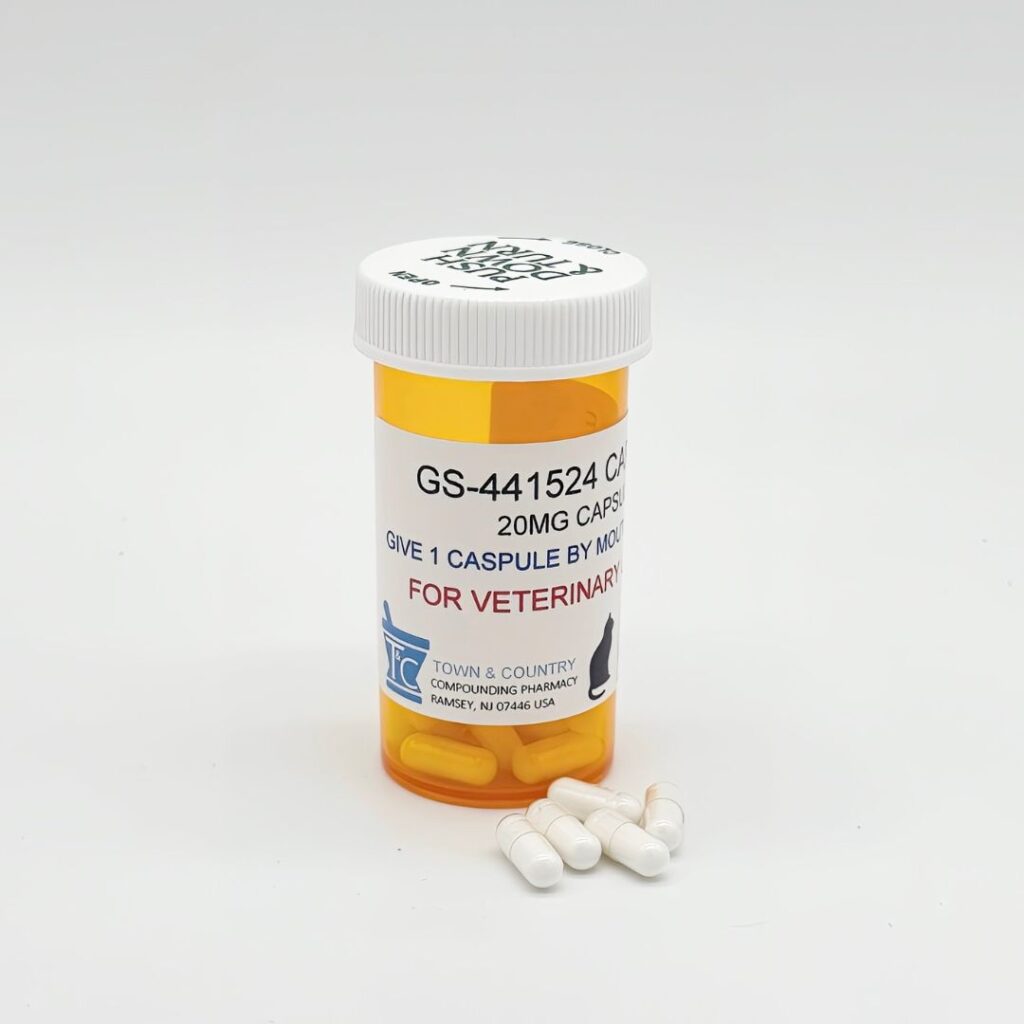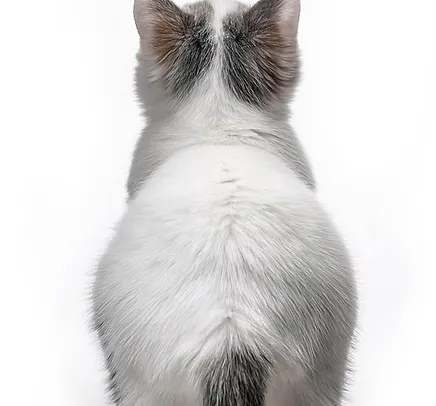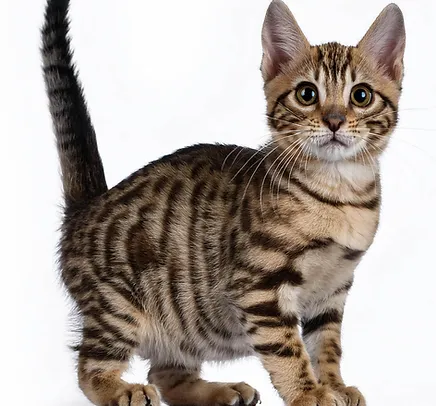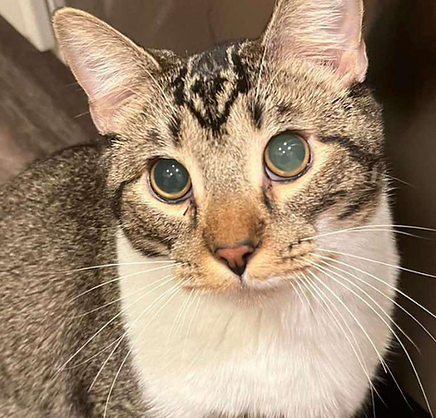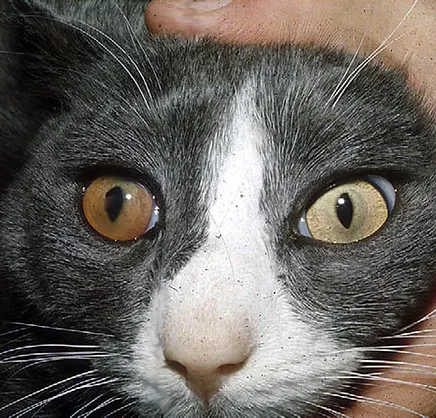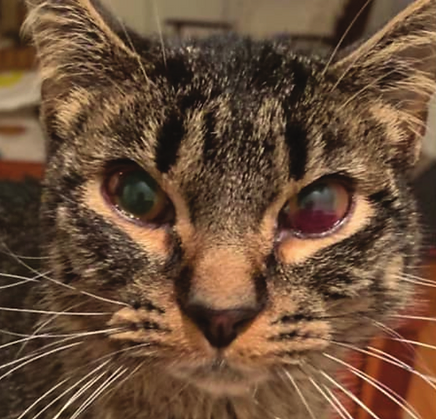Town & Country Compounding has
GS-441524 Injections & capsules in stock
Ready to ship (with Prescription) quickly to cat parents!
What is Feline Infectious Peritonitis (FIP)
FIP is actually a MUTATION of the very common Feline Coronavirus (FECV)
Almost every domestic cat will be exposed to the Feline Coronavirus in his or her lifetime and about 90% of cats who are exposed will either show ZERO symptoms or just have what amounts to a stomach bug and go on to make a full recovery
It’s the unfortunate 10% of the population who will experience the mutation of the virus into FIP
Because FIP is a result of a mutation, it is not currently believed to be contagious from cat to cat
FIP tends to strike kittens and young cats under the age of 2 years old but can develop in cats of any age
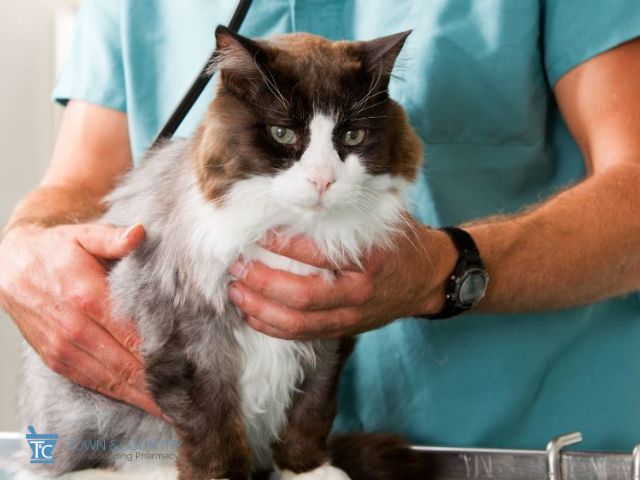
Read more detailed information on FECV infection & clinical manifestations of FIPV disease
There is a cure for FIP
Cats as old as 18 have been treated and cured
The anti-viral GS-441524, often referred to as GS, CURES 85-90% of cats properly treated with it
- Dr. Niels Pedersen, retired veterinarian and professor emeritus at UC Davis is credited with discovering that GS cures FIP
- GS and Remdesivir (which you may have heard of for treating Covid in humans) are closely related and nearly chemically identical
- The exact dosing is determined by type of FIP, cat weight and concentration of the GS medication
- GS is typically administered as an injection given under the skin (subcutaneously) or oral medication
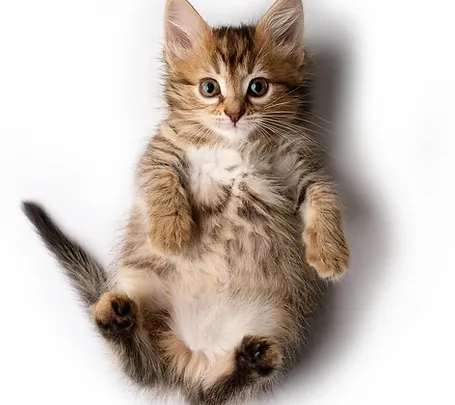
Availability GS in the United States
GS has recently become available through compounding pharmacies in the United States in both oral formulations and sterile injectables.
What this means: ANY VETERINARIAN can prescribe GS and have the order filled in one of the participating compounding pharmacies.
GS-441524 Dosage Forms
HOW IS FIP DIAGNOSED?
There is no single definitive test for FIP at this time which can make diagnosis a lot like putting the pieces of a puzzle together
- By looking at the symptoms the cat is presenting with, blood work results, cat’s age, breed, environment (is it a stressful environment?) along with any diagnostics from cat’s vet such as x-rays, ultrasound, fluid PCR testing on ascites or pleural fluid, a diagnosis can often be confirmed.
- We do not rely on titers and/or any Coronavirus test as they are not helpful in diagnosing FIP
- Fluid PCR tests can have up to 30% false negatives so we don’t rely on them alone
- If fluid is present, fluid cytology can be done to determine protein content and composition
- Neurological/Ocular cases may have very normal or close to perfect blood work
Your vet may decide to treat diagnostically – which means putting kitty on GS without a FIRM diagnosis. If we see improvements, we know we are most likely on the right track. Waiting for extensive diagnostic results before starting treatment can be catastrophic so it’s recommended to start as soon as FIP is being considered.
We tend to see the following FIP indicators in bloodwork:
Albumin low
Globulin high, above 5.0
Total protein high, above 8.0
A/G ratio less than 0.7
Total WBC high
Lymphocytes low
Neutrophils high
Anemia, usually non-regenerative
Liver enzymes high
DIFFERENT TYPES OF FIP
WET FIP
The most common form of the disease is referred to as “wet” FIP
With wet FIP, fluid can be present in the abdominal or chest cavities causing visible bloating or labored breathing
Other symptoms commonly seen with wet FIP are:
- loss of appetite & weight loss – depression & lethargy
- jaundice fever
If your cat has wet FIP and the fluid is in the ABDOMEN, do not have the fluid drained unless it it causing breathing or organ function issues
- If the fluid IS causing those issues, do not allow for more than 30% of the TOTAL FLUID VOLUME to be drained as it can send the cat into shock
If your cat has wet FIP and the fluid is in the CHEST CAVITY, you may allow for 100% of the chest fluid to be drained by a veterinarian
Below are examples of cats with wet abdominal FIP
DRY FIP
- FIP can also take a different form referred to as “dry FIP”
- Dry FIP, as the name implies, is not associated with fluid accumulations in the abdomen or chest, but can include localized masses in the kidneys, spleen, liver and terminal bowel, eyes, and the linings of the lungs and heart, and central nervous system
NEUROLOGICAL & OCULAR FIP
When Feline Infectious Peritonitis (FIP) affects a cat’s nervous system or eyes, it manifests in a couple of specific ways:
Neurological FIP – This form affects the cat’s brain and spinal cord
You might notice your cat having trouble with coordination or balance, such as stumbling or walking in circles
They might also show changes in behavior, like being unusually withdrawn or aggressive
In severe cases, there can be seizures or problems with their vision
Their pupils might be different sizes which is called anisocoria
Below are some examples of ocular FIP
RELAPSES & REINFECTIONS
- Although rare, relapses can occur during the 12-week observation period
- When a relapse DOES occur, treatment is restarted at a dosage of 5mg/kg higher than the previous round of treatment
- Reinfections are even more rare than relpases and occur in less than 1% of the cured cat population
- Reinfections can be treated at the same dosage as the first round of treatment OR at a dosage 5mg/kg higher - depending on the recommendation of the supervising veterinarian
FIP Recommended Treatment Protocol For Veterinarians
- All cats are treated for 84 days (minimum)
- Blood work is recommended at dx and at 30, 60 and 80 days
- Recommended panels are CBC and Chem panel (with proteins)
- Following treatment, after bloodwork and physical exam are satisfactory, patient enters 12 weeks of observation.
- Patient should appear normal, with the exception of a small percentage who may have permanent neurological symptoms.
- No further treatment is necessary unless relapse occurs.
- During observation, blood work should be run every 4-6 weeks until observation ends.
- Upon completing 12 weeks of observation (without relapse), the patient is considered cured of FIP.
- Dosing for compounded injectable GS (based on bioavailability)*
- Wet abdominal/dry FIP - treat at 8mg/kg, every 24 hours
- Ocular/neurological FIP - treat at 10mg/kg, every 24 hours
- Dosing for compounded oral GS (based on bioavailability)**
- Wet abdominal/dry FIP - treat at 15mg/kg, every 24 hours
- Ocular/neurological FIP- treat at 20mg/kg, every 24 hours
Critical cases:
- For critical patients, dosing every 12 hours is recommended for the first 5-7 days until the patient is stable. Critical patients can be transitioned to oral GS once they are stable (eating well and without vomiting or diarrhea).
- At that time, move to dosing every 24 hours.
- Oral GS can be started once patient is stable (eating well and without vomiting or diarrhea).
Medications that have been used extensively alongside GS include:
- AdvantageTM, Cerenia®, Capstar®, Cestex®, Clavamox®, Clindamycin, Convenia®, Denamarin®, Doxycycline, Fenbenazole, Keppra®, Metronidazole, Mirataz®, OnsiorTM, Phenobarbitol, Ponazuril, Prednisolone, Pyrantel, Revolution®, SimbadolTM, Triamcinolone, & ZorbiumTM
Spaying and neutering:
- Should be done during weeks 8-10 of GS treatment.
- If this is not possible, it is recommended that elective surgeries wait until the 12-week observation period is complete.
See website for vaccination guidance.
Blood work values to note during treatment and observation periods:
- Anemia should fully resolve prior to ending treatment (ideally by 60-day labs)
- Globulins decreased to 5 or lower
- Albumin increased to 3 or higher
- A/G ratio of 0.6 or higher by the end of treatment
If blood work is not markedly improved at 60-day labs, increase dosage by 5mg/kg (compounded injectable) and 10mg/kg (compounded oral) for the last 24 days of treatment.
If 80-day labs do not reflect blood work values noted above, increase dosage by 5mg/kg (compounded injectable) and 10mg/kg (compounded oral), extend treatment by 4 weeks and repeat blood work. Repeat extensions until blood work has normalized. If values remain unchanged after 2-3 extensions AND cat is otherwise clinically sound, the patient may have atypical baseline values.**
Be vigilant for other inflammatory conditions that may affect labs – especially oral inflammation.
* Compounded injectable GS formulations are labeled assuming 100% bioavailability2.
** Compounded oral GS formulations contain, and are labeled for, TOTAL milligrams of active ingredient per capsule (which has approximately 50% bioavailability by mouth)2.
*** These are general recommendations and individual cases should be evaluated by a veterinarian to determine if a treatment extension or dosage increase is needed.
† For further information: fiptreatmentsupport.com
1 https://www.ncbi.nlm.nih.gov/pmc/articles/PMC10458979/
2 https://pubmed.ncbi.nlm.nih.gov/36366527/
FIP Warriors® Vets Group: facebook.com/groups/fipwarriorsvets
FIP Warriors® 5.0 Group: facebook.com/groups/fipwarriorsoriginal

